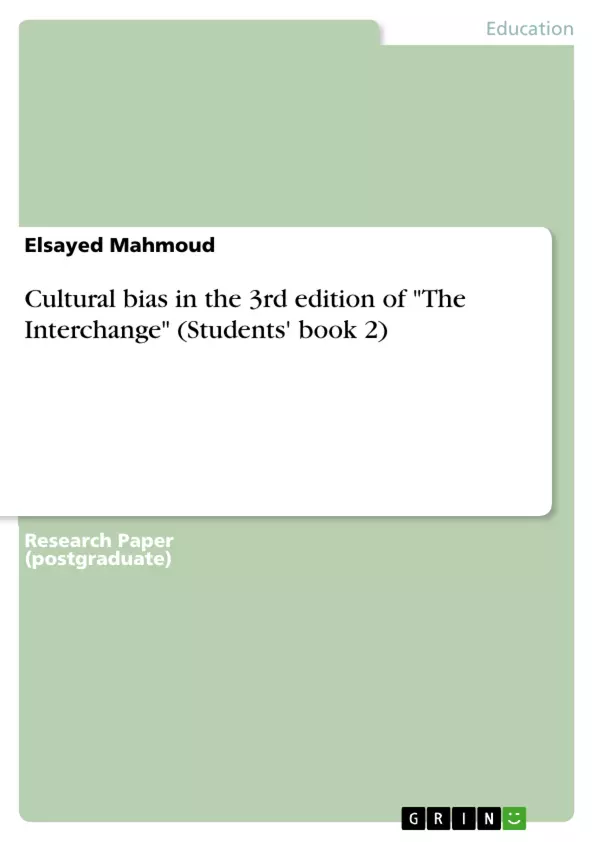The 3rd edition of “The Interchange” has been chosen in this study because it’s a fully revised edition of the world’s most successful English learning series for adult and young adult learners. As per my long experience in teaching this book in the Middle East, I am one of the admirers of this book because it is simple, modernized and it also has valuable information for the learners.
It is mentioned in the book that English is not limited to a culture, religion or nationality and it’s a global or international language. Consequently, it’s very important to know whether the aims of the book have been achieved or not. And because the textbook has a strong effect on the learners’ behaviors, it is crucial to be evaluated culturally in order to know whether it is really suitable for our learners or not.
Inhaltsverzeichnis (Table of Contents)
- Background of the Study
- Introduction
- Statement of the Problem of the Study
- Purpose of the Study
- Significance of the Study
- Questions of the Study
- Limitations of the Study
- Literature Review
- Methodology
- Models to be Applied
- Materials to be Applied
- Criteria for identifying bias
- Data Analysis and Findings
- Discussion
- Summary and Recommendations
- Summary
- Recommendations
- References
Zielsetzung und Themenschwerpunkte (Objectives and Key Themes)
This study aims to conduct a comprehensive cultural evaluation of the "Interchange Third Edition" textbook, focusing on its potential cultural bias and its suitability for learners in the Middle East. The study seeks to understand how the textbook presents different cultures, identify any instances of cultural bias, and propose recommendations for mitigating such bias in future editions.
- Cultural representation in the textbook
- Identification of cultural bias in the textbook
- Evaluation of the textbook's suitability for learners in the Middle East
- Recommendations for improving the textbook's cultural sensitivity
- The impact of cultural bias in textbooks on language learning
Zusammenfassung der Kapitel (Chapter Summaries)
- Background of the Study: This chapter introduces the study, providing context by discussing the "Interchange Third Edition" textbook and its popularity in the Middle East. It outlines the problem of cultural bias in textbooks and highlights the importance of evaluating the cultural relevance of instructional materials.
- Literature Review: This chapter delves into existing research on cultural bias in textbooks, examining various theoretical frameworks and methodologies for assessing cultural sensitivity in educational materials.
- Methodology: This chapter describes the research methodology employed in the study, including the specific models and criteria used to identify and analyze cultural bias in the "Interchange Third Edition" textbook.
- Data Analysis and Findings: This chapter presents the results of the analysis, highlighting the specific instances of cultural bias identified in the textbook and discussing their potential impact on learners.
- Discussion: This chapter analyzes the findings in detail, exploring the implications of the identified cultural bias for learners and providing a critical discussion of the textbook's strengths and weaknesses in terms of cultural representation.
- Summary and Recommendations: This chapter summarizes the key findings of the study and provides recommendations for addressing the identified cultural bias. It suggests strategies for improving the textbook's cultural sensitivity and promoting a more inclusive learning environment.
Schlüsselwörter (Keywords)
This study focuses on cultural bias, textbook evaluation, intercultural communication, language learning, educational materials, cultural sensitivity, and the "Interchange Third Edition" textbook. It explores the impact of cultural bias on language learning and aims to promote culturally sensitive and inclusive teaching practices.
- Quote paper
- Elsayed Mahmoud (Author), 2016, Cultural bias in the 3rd edition of "The Interchange" (Students' book 2), Munich, GRIN Verlag, https://www.grin.com/document/342495



